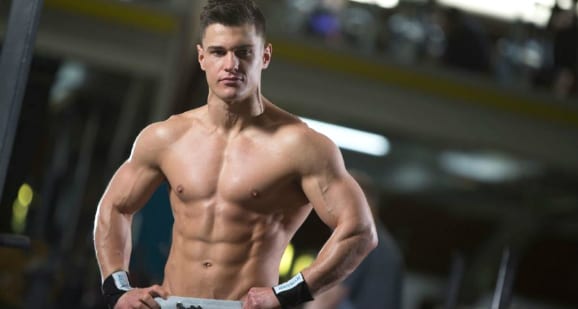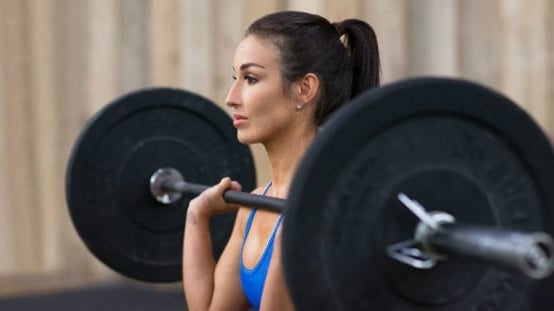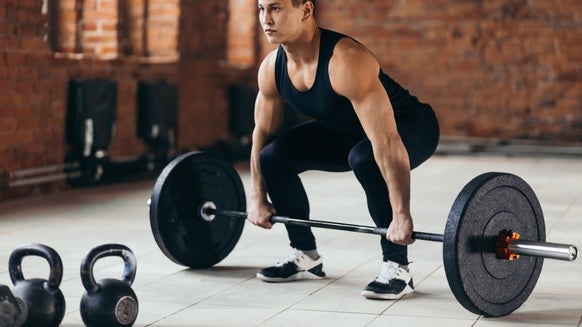Taking A Week Off From The Gym | How To Deload & Why

For many of us, the gym isn’t just a hobby or a necessity, it is a way of life, a place of worship, and even a form of therapy, so it can be easy for us to find ourselves becoming overly attached. Whereas some people will dread the thought of exercising and working out, many of us, for the most part at least, will relish the thought of hitting the iron and training our bodies like never before.
If however, you are guilty of training far too frequently, and find yourself becoming restless and thinking about the gym on days where you are supposed to be taking it easy, as time goes by, you’ll find your workouts becoming less and less productive.
The Need For A Gym Break
In the early stages of a new training regime, you probably will have noticed your strength and energy levels increasing on a daily basis, along with your lean muscle percentages, whilst your body fat percentages will have been taking a pretty significant nosedive. As time goes by however, the more you punish your body, the less productive your workouts will become and the harder you will find them.
All of a sudden, your energy levels will plummet, your body and muscles will ache, and you’ll struggle to lift weights that used to be incredibly easy for you. Once you hit a natural training plateau and find your body constantly aching, these are the tell-tale signs of overtraining, which is where a de-load week could prove incredibly useful.
If you’re unsure about what a de-load week is, then by the time you’ve finished this article, hopefully all will become clear.
So, what is a de-load week?
If you’re a self-confessed gym rat that trains far too frequently and pushes yourself far too hard, much too often, the need for a de-load week on a semi-regular basis is more prevalent than ever before.

In reality, there is no tried and tested formula for the ultimate de-load week, as different people have experienced different results. Some people for example, will use de-load weeks to do virtually no physical activity at all, and will give their bodies a well-earned rest. Others however, will reduce training frequency and training volumes.
Don’t worry, we’ll be taking a look at some of the more popular methods of de-loading in just a moment, so all will become clear. Before we do however, it is worth noting that de-load weeks are not excuses for you to lounge around on the sofa in your underwear for much of the day, eating your own bodyweight in junk food, and being about as physically active as a sloth.
You still keep up the same healthy habits and lifestyle choices that have helped get you where you are thus far, the only difference is that you become less physically active.
Here’s a look at some popular de-loading options!
What are the benefits of de-load weeks?
There are many benefits associated with de-load weeks, although some of the primary and most established benefits include the following:
If you’re getting weaker, are struggling for energy, and generally find yourself aching and constantly feeling sore, these are all signs of overtraining, which is why a de-load week could prove so beneficial.
By putting your body through much less stress, it has the chance to rest and recover properly, which will help enhance muscle growth, as well as strength and power.
As previously mentioned, many individuals who take de-load weeks will come back to the gym even bigger and stronger than they were previously. A lot of people fear de-load weeks as they believe they will make them weaker, when in reality, the opposite is true.
On average, you won’t begin seeing reductions in strength and power until around 3 weeks away from the gym, so don’t worry about that.
At times when you are overtraining and are struggling to make any improvements, your psychological health can take a real battering, as weights which you were once comfortable with lifting, all of a sudden feel heavy and difficult.
Your mind can play tricks on you, your confidence can take a battering, and you may even find yourself asking yourself why you’re bothering to put yourself through these strenuous workouts, if you aren’t benefitting or seeing any results.
De-loading options

As mentioned, there is no one true tried and tested formula for de-loading, as different people incorporate different methods.
Taking a complete week off from the gym would be a great option for some - especially if you're on a vigorous training routine split. However, there are other options to reduce the intensity of your normal workout split.
Generally speaking however, some of the most popular de-loading methods include:
One of the most common and popular methods of de-loading is to take a week where you greatly reduce the amount of weight that you lift during each workout. You should aim for working sets to be around 40 – 60% of your one rep max.
A lot of people will feel like they aren’t benefitting from these weights and will perform far too many reps, which is exactly what you should NOT be doing. You go with light loads and low sets and reps – remember, the idea is to give your body a break.
Some people will keep their weights generally the same but will instead reduce their training volume. Say for example, a normal working set on bench press would be 225lbs for 4 sets of 5 – 6 reps, they would instead perform 2 working sets of 2 – 4 reps instead.
The reduced volume method is a less popular form of de-loading, though it can still be beneficial, especially if you are training with strength in mind.
For times when just one lift is suffering compared with your others, individual, or single lift, de-loads are very useful. If for example, you just can’t seem to make any progress with deadlifting, or if you’re stuck in a deadlift plateau, you would carry on training as usual, except for when it came to deadlift day, you would greatly reduce the weight and possibly the sets, and would focus on technique and form instead.
For gym goers that can’t bear to be out of the gym and who fear losing their precious gains, alternative exercise de-loads could be useful, although they certainly aren’t ideal.
With these forms of de-loads, you will replace various exercises, particularly heavy compound exercises, with alternative, slightly easier movements for around 4 – 6 weeks.
Take Home Message
When you de-load however, you get to enjoy your week of training, there is no pressure, and once you return to your original routine, as your strength and energy levels should have improved, you can fall in love with training once again.
Plus you can develop an even stronger








